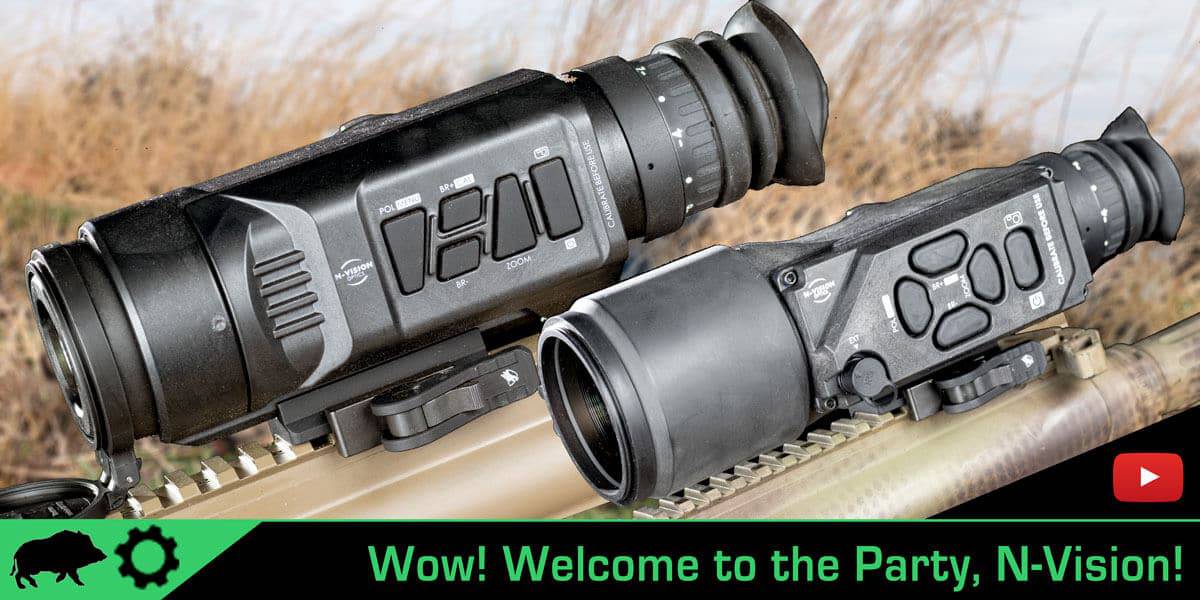 The N-Vision HALO and HALO-LR thermal optics changed the thermal game this year. For that to mean anything useful, all we have to do is look back a few years. Not too long ago if you were in the market for a new thermal the choice was simple; get an ATN Thor. Well, times have changed and if you ask that question today, in June 2019, you would probably get a dozen different answers.
The N-Vision HALO and HALO-LR thermal optics changed the thermal game this year. For that to mean anything useful, all we have to do is look back a few years. Not too long ago if you were in the market for a new thermal the choice was simple; get an ATN Thor. Well, times have changed and if you ask that question today, in June 2019, you would probably get a dozen different answers.
At the end of 2018, most people would agree that Trijicon sat atop the mountain and, depending on your needed feature set and price range, you might want to turn towards a Pulsar or FLIR. But now there’s a new kid on the block and he wants to play king of the hill.
Enter N-Vision
It turns out the new kid isn’t so new, or that much of a kid. For more than 13 years N-Vision sold strictly to the military, law enforcement, and various three letter agencies. Finally they decided to start selling to the public and came to market with a wealth of knowledge and some well thought out products. The HALO is their 25mm offering and HALO-LR is their 50mm offering.
 Halo and Halo LR Size and Weight
Halo and Halo LR Size and Weight
These N-Vision units are very lightweight. The HALO weighs in at 20.4 oz and the HALO-LR weighs in at 28.2 oz. That is roughly ¼ pound lighter than each of the respective Trijicon Reap-IR units. The body of the HALO is made of polymer. This obviously helps them achieve these numbers and after handling them, I was surprised at how rugged they felt.
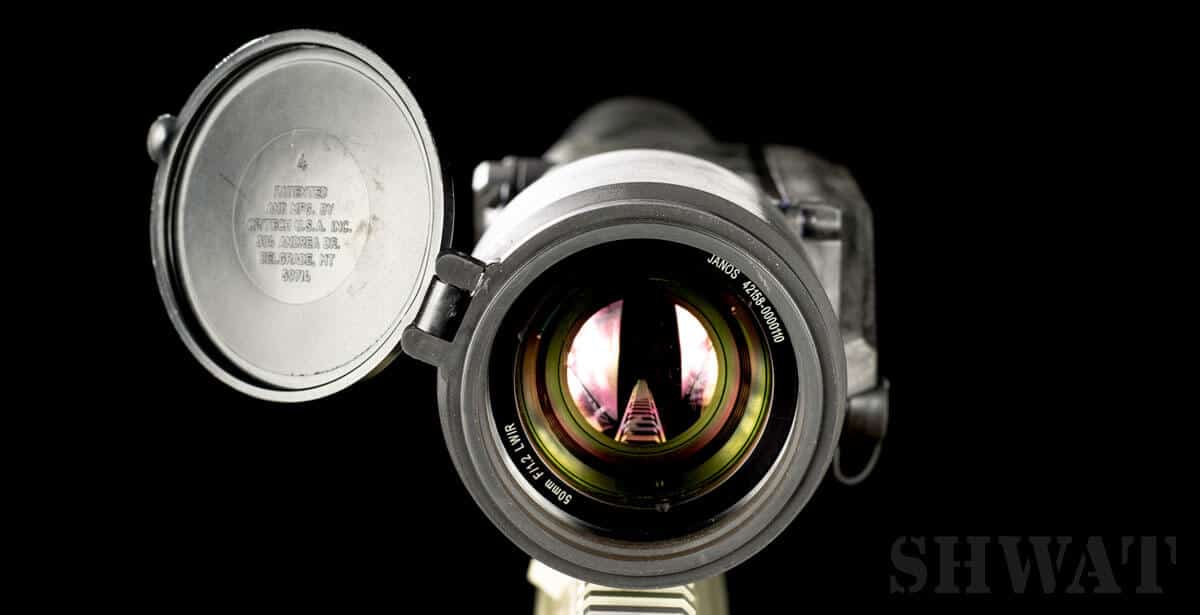 Those weights include the mounts, preinstalled American Defense Manufacturing QD mounts. I’m a big fan of these mounts. That’s no surprise to you if you read my FLIR review. N-Vision backs the HALO and HALO-LR with a 5 year warranty, one of the longest warranties in the thermal game right now. With that in mind, I’m not too concerned about the polymer body. In fact, some on the SHWAT™ Team have old polymer flashlights, or polymer rail sections still in good shape after years of use. I’ve carried a polymer pistol forever… It is also worth noting that the warranty is transferable and you do not have to register the unit.
Those weights include the mounts, preinstalled American Defense Manufacturing QD mounts. I’m a big fan of these mounts. That’s no surprise to you if you read my FLIR review. N-Vision backs the HALO and HALO-LR with a 5 year warranty, one of the longest warranties in the thermal game right now. With that in mind, I’m not too concerned about the polymer body. In fact, some on the SHWAT™ Team have old polymer flashlights, or polymer rail sections still in good shape after years of use. I’ve carried a polymer pistol forever… It is also worth noting that the warranty is transferable and you do not have to register the unit.
Ease of Use
Having spent a lot of time in the field with different thermal offerings, it seems I always get frustrated by their user interface. I end up changing the color palette when I want to change settings. Or I want to zoom in on my target and instead land in the polarity settings. Frustration sets in at the most inopportune time.
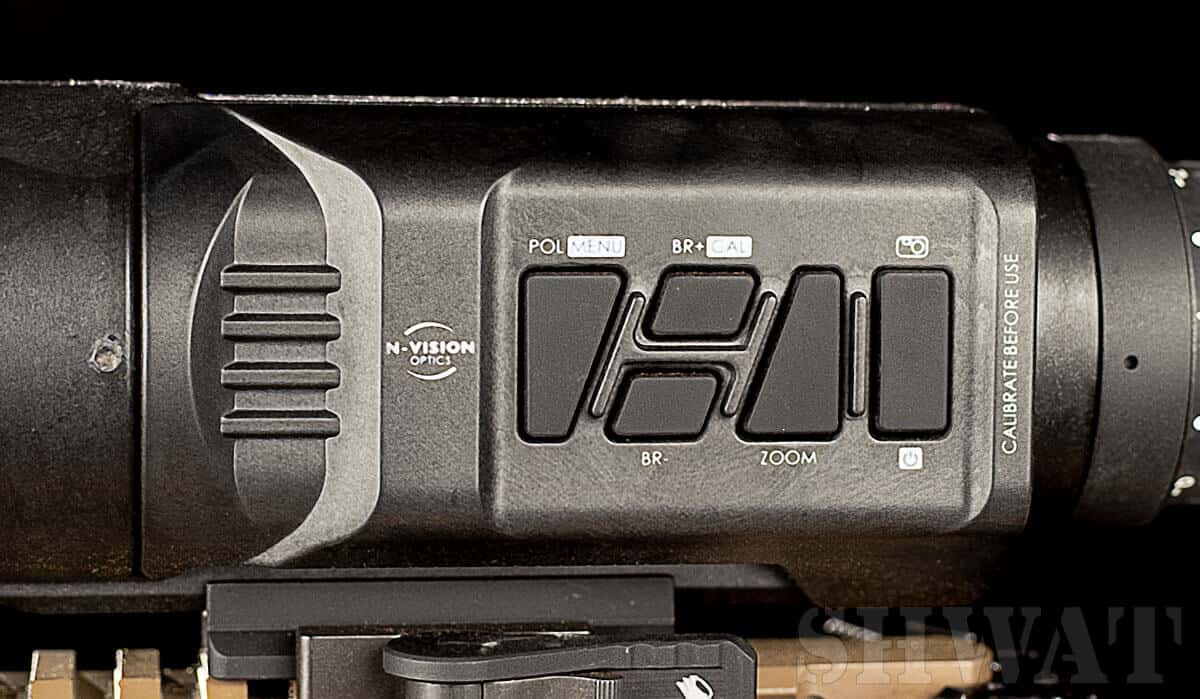
N-Vision Halo Controls
For my purposes I found the user interface and button layout on the HALOs a breath of fresh air. My N-Vision units arrived the same day DFW Shooting Sports got their first units in. Nice timing as the manager, JD, was coming with me and Jared Hilton on a Texas hog hunt.
I headed to the range to zero the optics. I had not even messed with them in advance, but within just a few minutes I had all three N-Vision thermal optics zeroed. Color me surprised, I hadn’t even glanced at the instructions. If you knew how much time I’ve spent fighting menus to get a thermal zeroed before a hunt, this would certainly impress you.
We put a HALO-LR on PWS MK216 .308, a second HALO-LR on a Honey Badger by Q in 300BLK, and the HALO on an Alexander Arms 6.5 Grendel.
N-Vision HALOs seem to eliminate the fluff. What do I mean? Once you zero and select your reticle, you are good to go.
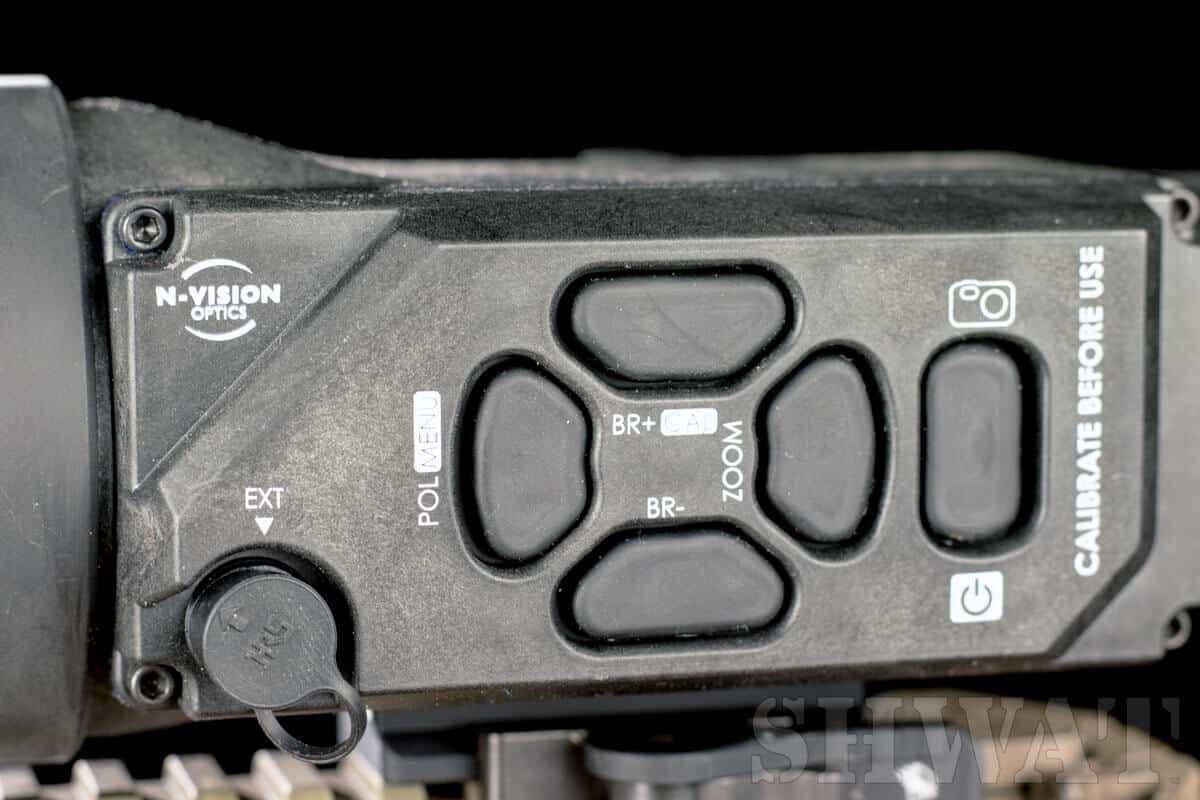
N-Vision Halo LR controls
There is a power button and then 4 large buttons laid out like a directional pad: left, right, up, and down. All you really need to know after zeroing is that the left arrow will cycle through color palettes. That won’t take long. Your choices include only black hot, white hot and two outline palettes. None of the psychedelic crap no one uses. The right arrow cycles through the digital zoom, 2X and 4X. A long press on the up arrow nukes the system. Easy peasy.
Halo Image
The high end Germanium Lens combined with N-Visions electronics was a dream in the field though conditions weren’t great for our hunt. A ton of rain in the days before made everything the same temperature, more or less. We need temperature differentials when it comes to using thermal optics. The humidity was at 58%, not helpful. Seeing hogs would already be difficult with the wheat taller than our knees. I don’t know if that’s worst case for thermal use, but it’s a long way from best case.
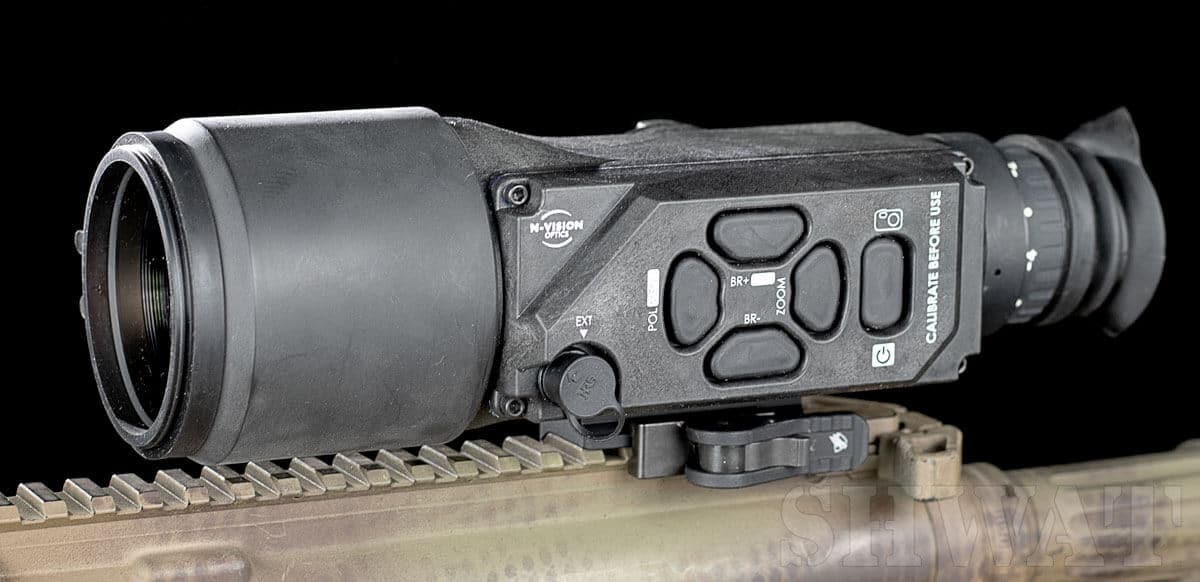 N-Vision HALOs have a fixed focus, no surprise as that goes along with their no frills no fuss dogma it seems. I was very pleased to see how well it worked under these conditions. When the humidity is high, it often becomes much harder to get a clear sharp an image. The HALO clarity paid dividends even in these sub par circumstances. Not once did we end up on a wild goose chase, mistakenly closing the distance on a herd of cattle we had initially though were hogs.
N-Vision HALOs have a fixed focus, no surprise as that goes along with their no frills no fuss dogma it seems. I was very pleased to see how well it worked under these conditions. When the humidity is high, it often becomes much harder to get a clear sharp an image. The HALO clarity paid dividends even in these sub par circumstances. Not once did we end up on a wild goose chase, mistakenly closing the distance on a herd of cattle we had initially though were hogs.
This was especially true with the HALO-LR I had on my PWS. As driver for the night, I was running lights out, kitted up with FLIR BNVD-51’s for a clear three dimensional view of the road. Jared, scanning in the pickup bed, would signal that he had spotted something. Window down, BNVD’s up, HALO-LR on, and then I could call out an immediate positive identification of whatever was downrange. Every. Single. Time.
To give you an idea of how good this looks when using the N-Vision thermals, take a look at this video:
Is there anything I don’t like?
Our trio put down 22 hogs and one coyote over about 10 hours of hunting. There is a lot to love about the N-Vision, and I am excited to get it back into the field for some more testing. My only point of contention at the moment is how you hook up the DVR on the 50mm HALO-LR.
The plug for the DVR is on the left side of the N-Vision units and this causes the cord to stick out about one inch. The cord then jabs you on the ribs when you have the rifle slung (if you are right handed). I spoke with N-Vision about this and they are currently working on producing a cord with a 90 degree attachment to alleviate that issue.
Obviously I wish the HALOs had onboard recording, but DVRs are the solution at the moment. One thing to be aware of is the image quality from the DVR has a noticeable loss of resolution. The LPMR-T Thermal Video Recorder looks like a decent option to overcome this, but I just got my hands on one and can’t fully endorse it quite yet.
Parting thoughts on N-Vision Halo Thermal Optics
I definitely want some more time behind the optic. More than anything I want to validate if this thing is really as good as I think it is. At the moment I am falling pretty hard for these N-Visions. They are simplistic, no-fluff, premium thermals. If you are looking at one, you would not be misguided in pulling the trigger. Pun intended. If you are stuck between the 25mm and 50mm I would make the decision based on where you hunt. Big open field, go with the 50mm. More wooded areas with shots inside of 200 yards go with the 25mm. When you consider what you are getting, they are priced competitively as well. The 25mm comes to market at $5,995 and the 50mm at $7,495. Either way, you are going to be very happy. N-Vision nailed their entry into the public market.

